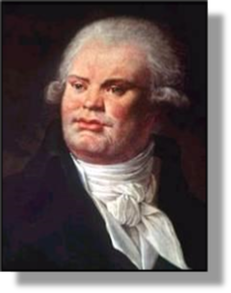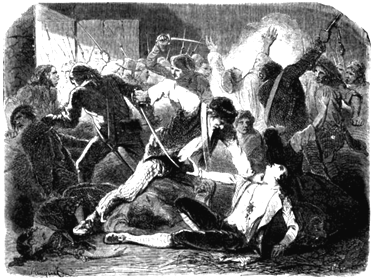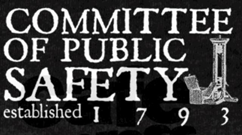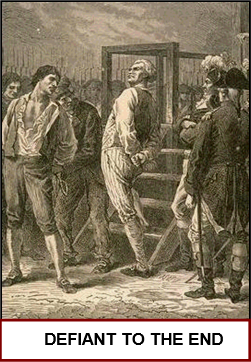


GEORGES JACQUES DANTON 1759 -
xxxxxThe lawyer Georges Jacques Danton, one of the outstanding leaders and orators of the French Revolution, is generally considered to have played a prominent part in the overthrow of the monarchy in August 1792, and the establishment of the First Republic. He first came to prominence a month later, however, when as minister of Justice he organised the defence of Paris against an advancing Austro-
 xxxxxThe French revolutionary leader Georges Jacques Danton was born at Arcis-
xxxxxThe French revolutionary leader Georges Jacques Danton was born at Arcis-
xxxxxCome the events of August 1792, it is generally believed that he organised the attack on the Tuileries that finally brought down the monarchy, and played a leading part in the establishment of the First Republic. In fact, however, he did not come to public prominence until, as minister of justice in the Legislative Assembly, he was set the task of organising the defence of Paris, threatened by the advance of a large Austro-

xxxxxWhen Danton was elected to the National Convention in September 1792, he did make a genuine attempt to reconcile the differences between the parties, but the moderate Girondists would have none of it. They accused him of organising the September Massacres (illustrated) -
xxxxxBy April 1793, following the formation of a powerful alliance of states against the new republic, France had its back to the wall. French armies were falling back from areas they had occupied earlier, whilst at home there was widespread unrest in a number of major cities, and across large areas of the country. Apart from opposition to the nationalisation of the Church, and the imposition of compulsory national service, there was much support for a federal system of government rather than a centralised control from a revolutionary government in Paris.
 xxxxxTo meet this dire situation, an emergency executive body known as the Committee of Public Safety was set up on the 7th April, responsible for the defence of the land and, via the Revolutionary Tribunal, the stamping out of opposition at home. It was not until June, however, when Danton’s party the Montegnards, expelled the moderate Girondist party, that the committee took on dictatorial powers and began its work in earnest. Indeed, as the committee’s leader during its first term of office, Danton followed a surprisingly moderate policy. He drew up a new democratic Constitution to placate the provinces and, at the same time, made an unsuccessful attempt to negotiate with the European monarchies for an end to the war. Given this attempt at conciliation, it is perhaps not surprising that when the committee’s first term expired in July, Danton was not re-
xxxxxTo meet this dire situation, an emergency executive body known as the Committee of Public Safety was set up on the 7th April, responsible for the defence of the land and, via the Revolutionary Tribunal, the stamping out of opposition at home. It was not until June, however, when Danton’s party the Montegnards, expelled the moderate Girondist party, that the committee took on dictatorial powers and began its work in earnest. Indeed, as the committee’s leader during its first term of office, Danton followed a surprisingly moderate policy. He drew up a new democratic Constitution to placate the provinces and, at the same time, made an unsuccessful attempt to negotiate with the European monarchies for an end to the war. Given this attempt at conciliation, it is perhaps not surprising that when the committee’s first term expired in July, Danton was not re-

xxxxxBy this time, Danton’s disapproval of the scale of terrorist repression was there for all to see. In October, allegedly for reasons of ill-
xxxxxThough clearly open to charges of opportunism, corruption and intrigue, Danton was nevertheless a genuine patriot, and his rapport with the common people won him their admiration and sympathy. As a competent leader and fine orator, he was seen by many as a prominent figure in the overthrow of the monarchy, and the establishment of the First Republic in September 1792. And to his credit must be added his willingness to compromise, and the courage he showed in openly opposing the excessive blood letting which had been unleashed in the cause of the revolution.
xxxxxIncidentally, a play entitled Dantons Tod (Danton’s Death) was produced in 1835 by the German dramatist Georg Büchner (1813-
Acknowledgements
Danton: by the French painter Constance Marie Charpentier (1767-
G3b-


